Ride Along as These Scouts Go Dog-Sledding in Wisconsin
The Scouts in Troop 247 of Shakopee, Minnesota, were excited to go dog-sledding — but not nearly as excited as the dogs were.
“When they’re ready to run, they jump really high,” says Ellie Ward, 16, a Second Class Scout.
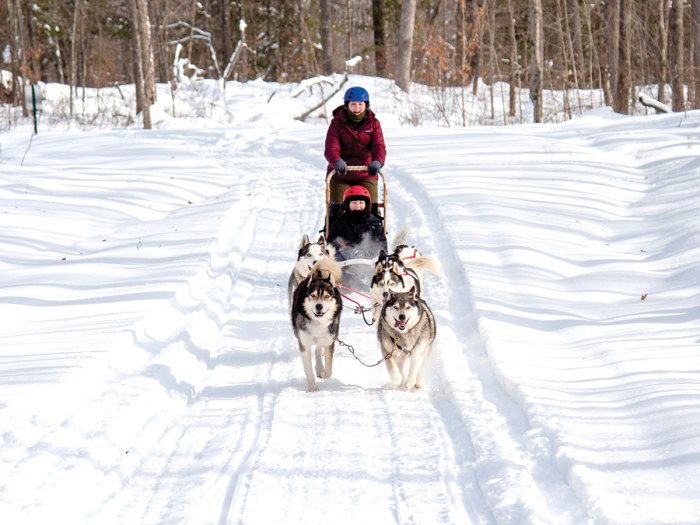
Meghan Steffen (driving) and Eliana Sagstetter (riding) are all smiles as sled dogs pull them across a snowy trail at Tomahawk Scout Camp.
The bouncing soon turned into mushing as the Scouts hopped on the sleds and signaled the huskies to start running. For 20 minutes straight, the sled dogs pulled the Scouts across snow-covered trails. After a brief break, the dogs were swapped out for new dogs that were also eager to run.
“They just want to run,” says Elise Lange, 15, a Tenderfoot Scout. “I’m sure they’d run for as long as they’d want to.”
The troop had only a weekend with the frisky huskies, but it was enough time to try a new activity and discover more chilly adventures.
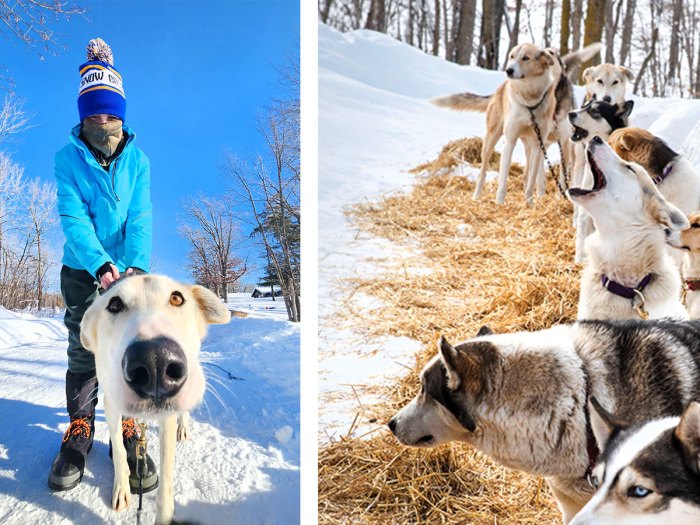
Left: Sara Kysylyczyn of Troop 7401 of Shoreview, Minnesota, with Louie, a sled dog at Tomahawk Scout Camp. Dog-sledding is one of the fun activities Scouts can choose to participate in at the camp.
LET IT SNOW
In January and February, Tomahawk Scout Camp in northern Wisconsin transforms into Snow Base, a winter destination filled with frozen fun like ice fishing, cross-country skiing, snowshoeing and winter camping. But a favorite program choice among Scouts is dog-sledding.
“We thought it sounded cool,” says Katherine Schnorr, 15, a Life Scout. “We had done winter camping before.”
Wisconsin sees a lot of snow and plummeting temperatures in the winter, and when it got closer to the Scouts’ dog-sledding adventure last January, the forecast predicted it’d be frigid.
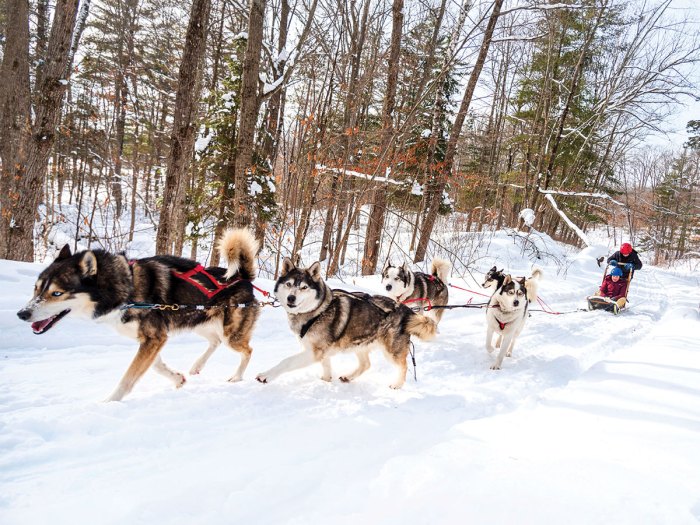
Meghan Steffen (riding) and Eliana Sagstetter (driving) use the skills they learned to control the sled as five dogs pull them.
“When we were there, it was below zero,” Ellie says. “The camp provides 90% of what you need.”
Mummy sleeping bags, wool clothing, cooking equipment — the Northern Star Council camp staff had everything covered. On the first night, the camp also provides the training you need for operating the sleds and taking care of the huskies. Energetic dogs can be difficult to control; you can’t be timid when putting on their harnesses and hooking them up to the sled.
“We had to be confident in handling the dogs,” Elise says.
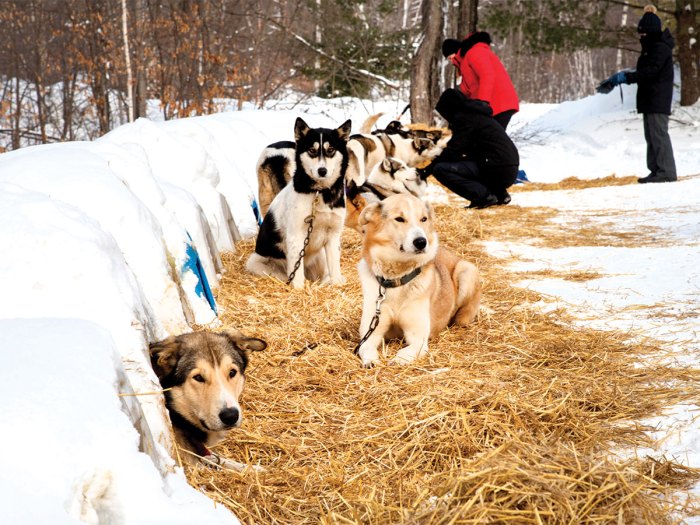
Straw provides a warm place for the dogs to rest. The front three dogs, Jesse, Rivet and Bailey, are all related and enjoy running.
DOGS COME FIRST
After a night sleeping in the bunkhouse, the Scouts woke up and had a job to do before breakfast.
“Before we’re allowed to eat, we had to feed the dogs,” says Meghan Steffen, 15, a Life Scout.
The group tossed some straw on the ground for the group of 20 huskies to relax and stay cozy in. They cleaned the kennels and filled the dogs’ bowls with fresh water. The dogs also got spoiled with some loving pets, scratches and pats from the girls. If you take care of your animals, they’ll be healthy, happy and ready to work.
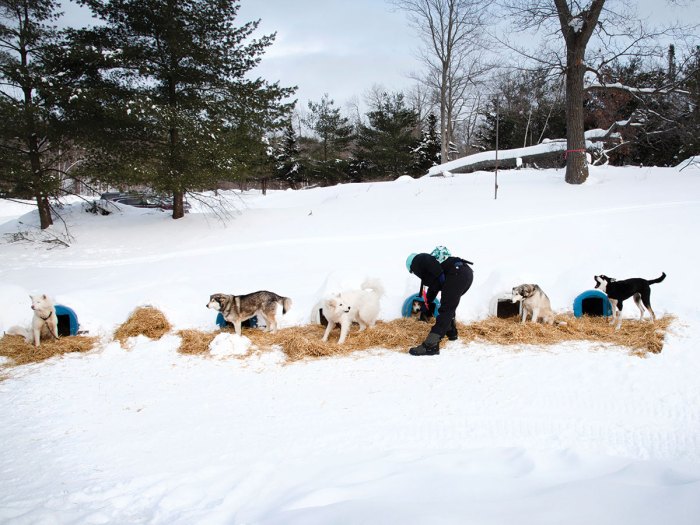
Each sled dog has a barrel to retreat to so they can escape the elements or in case they’re feeling shy.
“They’re working dogs,” Ellie says. “They were raised to do this.”
After the dogs were cared for, it was time to get familiar with the sleds. Each sled required at least four dogs, as it would be pulling two Scouts: one to drive and one to manage the ropes. Standing on the back of the sled, the driver calls out commands to the dogs and leans on sharp curves to keep the sled upright. The rider sits on the sled and watches the dogs and the attached ropes to make sure no problems arise.
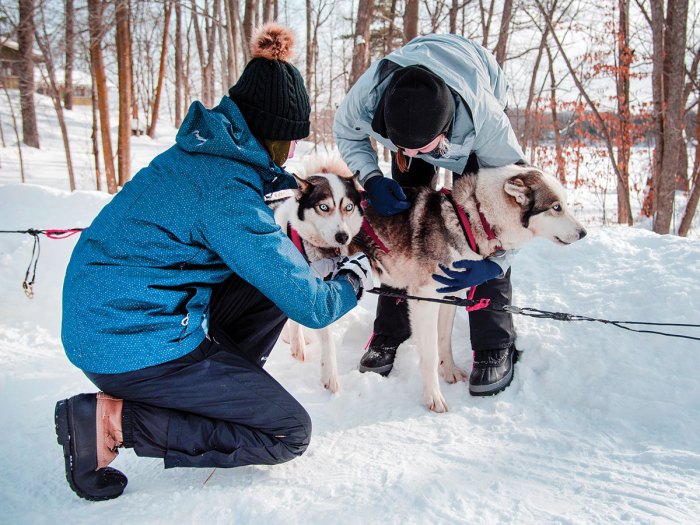
Katherine Schnorr (left) and Ellie Ward secure harnesses to sled dogs Chip and Dale.
MADE FOR THIS
For thousands of years, people have used dogs to haul gear. Several breeds can handle the cold and demand of pulling a sled; the camp uses Alaskan and Siberian huskies. These dogs have double-layered coats to keep them warm, and their metabolism (the process of turning food into energy) works in such a way that they have the endurance to run hundreds of miles in a week.
“Alaskans are used for sled racing. You can tell they’re mixed with greyhound,” Ellie says. “They both like to talk a lot.”
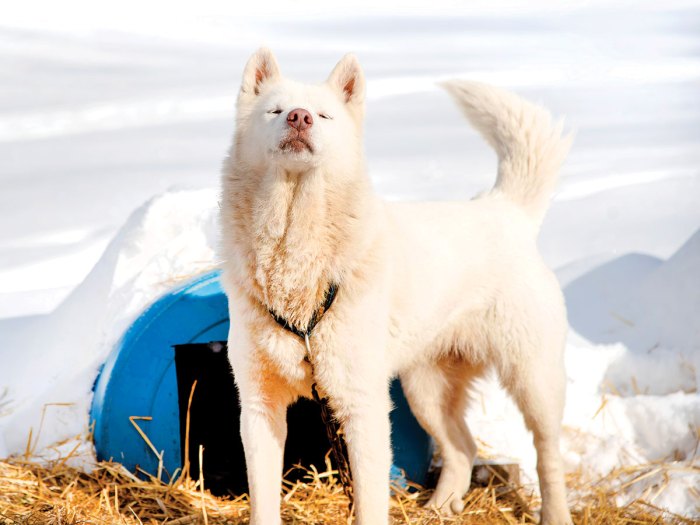
Dogs have different personalities, but on a sled-dog team, they must work together. The “alpha ” of the group should be the human, driving the team. Pictured here is Ivy, a blue-eyed Siberian Husky that enjoys an occasional stretch in the sun.
If you own a husky as a pet, you know they’re very vocal creatures. When driving a sled, you must be just as loud. It can prove challenging, especially in the elements.
“All the wind was coming at you and going through your gloves,” Elise says.
The Scouts soldiered on, yelling commands at the dogs. If the dogs still mushed too fast, the driver dragged her foot in the snow, signaling for the dogs to stop. Many of the Scouts don’t have such a powerhouse animal as a pet, so they had to make sure the team knew who was alpha during a ride.
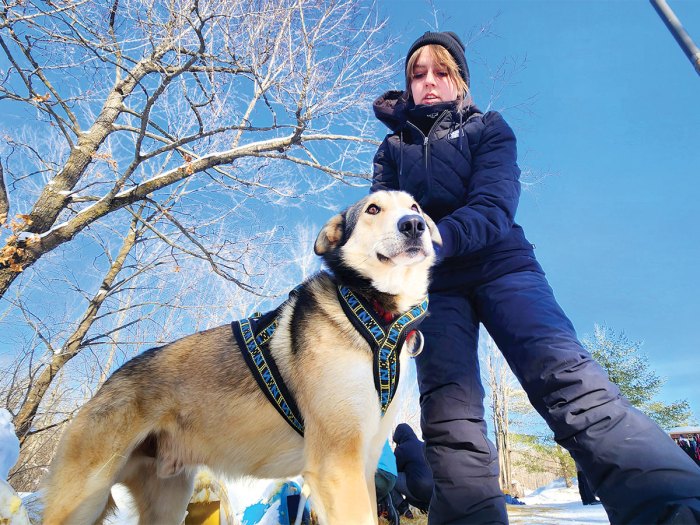
Brynn Entner with Troop 7401 of Shoreview, Minnesota, holds on to Jesse. Tomahawk Scout Camp holds several sessions in January and February for Scouts to enjoy winter activities.
TIME FOR BED
Two rides later, the Scouts moved on to their next activity: getting ready for bed. They set up two shelters: a parachute tent and a quinzee, a simple shelter made from hollowing out a pile of snow. For the quinzee, that meant breaking out the shovels.
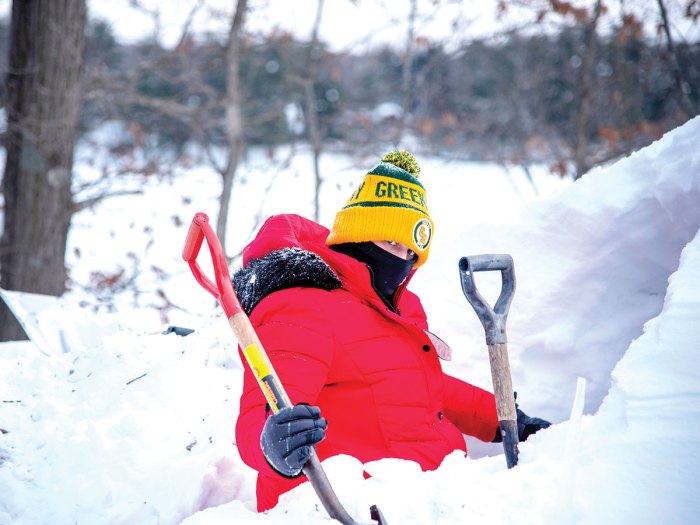
Emilee Burger digs out a quinzee from a pile of snow. Temperatures dipped below zero overnight; however, the Scouts stayed comfortable inside the snow structure.
“It took a lot of work, but it was fun,” Katherine says. “We had really nice sleeping bags. It was a lot warmer than I expected.”
It also helped that the girls laid a tarp and a few sleeping pads under their sleeping bags. The more padding there is between you and the ground, the more insulation you have to help keep you warm.
The next morning, the Scouts fed the dogs again, went on one last ride and then said goodbye to their new furry friends.
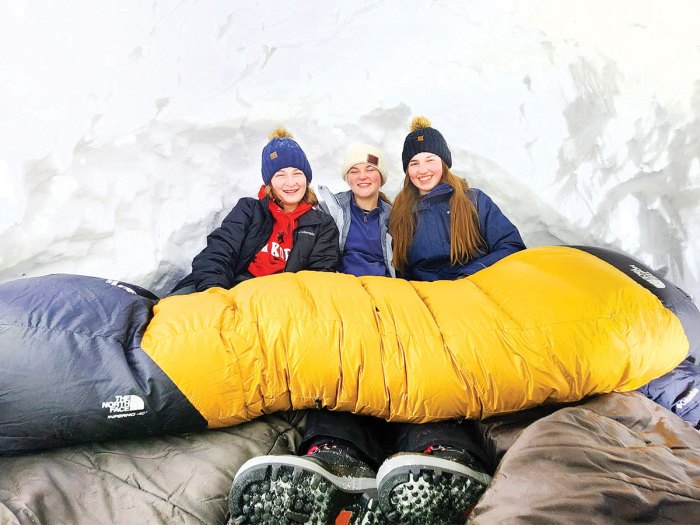
Eliana Sagstetter, Ellie Ward and Katherine Schnorr set up their sleeping bags inside a quinzee.
Listen Up!
Some common mushing commands are:
Hike!: Tells the dogs to go.
Haw!: Go left.
Gee!: Go right.
Whoa!: Stop.
Other calls include affirmations, which reward the dogs for following commands.
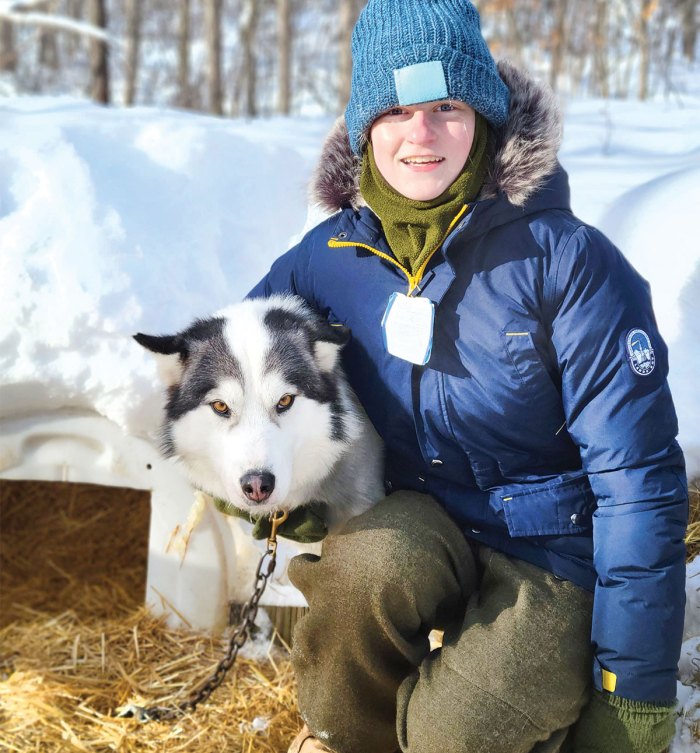
Elise Lange poses with one of the sled dogs.
Leave a Comment